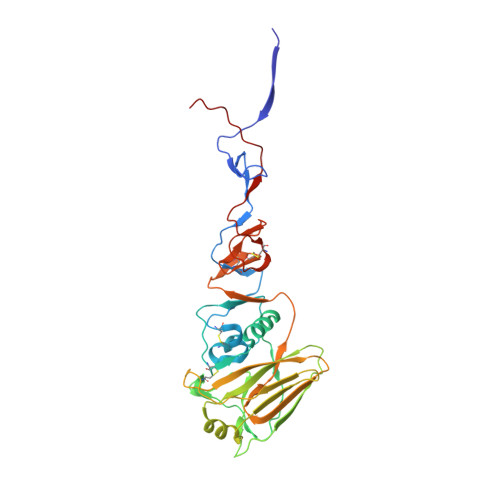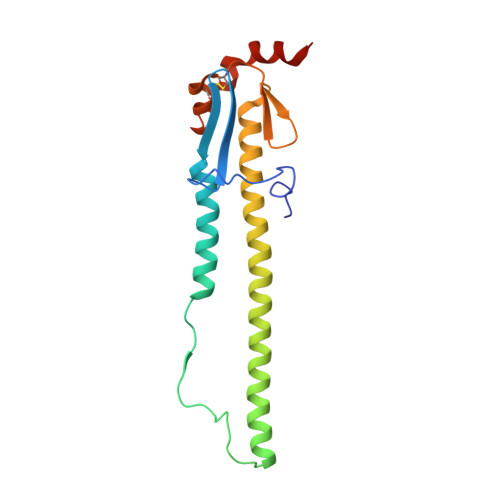Diversity of Functionally Permissive Sequences in the Receptor-Binding Site of Influenza Hemagglutinin.
Wu, N.C., Xie, J., Zheng, T., Nycholat, C.M., Grande, G., Paulson, J.C., Lerner, R.A., Wilson, I.A.(2017) Cell Host Microbe 21: 742-753.e8
- PubMed: 28618270
- DOI: https://doi.org/10.1016/j.chom.2017.05.011
- Primary Citation of Related Structures:
5VTQ, 5VTR, 5VTU, 5VTV, 5VTW, 5VTX, 5VTY, 5VTZ, 5VU4 - PubMed Abstract:
Influenza A virus hemagglutinin (HA) initiates viral entry by engaging host receptor sialylated glycans via its receptor-binding site (RBS). The amino acid sequence of the RBS naturally varies across avian and human influenza virus subtypes and is also evolvable. However, functional sequence diversity in the RBS has not been fully explored. Here, we performed a large-scale mutational analysis of the RBS of A/WSN/33 (H1N1) and A/Hong Kong/1/1968 (H3N2) HAs. Many replication-competent mutants not yet observed in nature were identified, including some that could escape from an RBS-targeted broadly neutralizing antibody. This functional sequence diversity is made possible by pervasive epistasis in the RBS 220-loop and can be buffered by avidity in viral receptor binding. Overall, our study reveals that the HA RBS can accommodate a much greater range of sequence diversity than previously thought, which has significant implications for the complex evolutionary interrelationships between receptor specificity and immune escape.
Organizational Affiliation:
Department of Integrative Structural and Computational Biology, The Scripps Research Institute, La Jolla, CA 92037, USA.






















